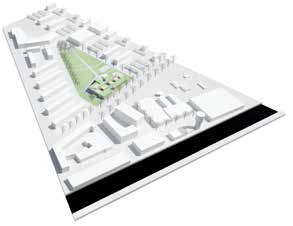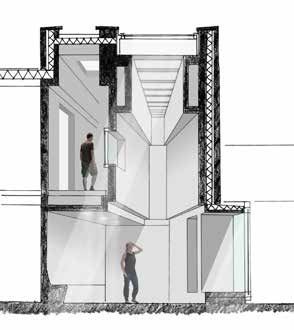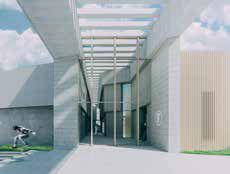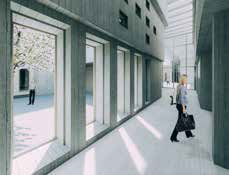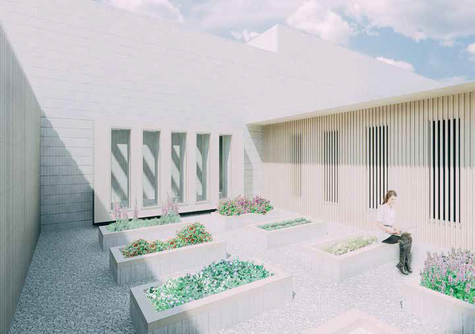Jeroen Schoots
- Course
- Architecture
- Class
- 2015
Geloof in gezondheid: een gebouw voor kerk en zorg
The churches are emptying. However, the church community In Utrecht Tolsteeg is an exception to this. As a young, growing church community, they are seeking out a new position in society. In fact, they want to be more open to fellow human beings. They come together more often than Sundays alone and through various activities, such as eating together with people from the neighbourhood. Nevertheless, the importance of contemplation and sacramental preparation remains.
How can the church community strengthen its connection with fellow human beings and the immediate environment by means of a building?
Position of the church
A location for a health centre in the district has been sought for many years now. The most recent plans did not go ahead as a result of the crisis. The church community can find a place for the health centre that responds to the current changes in a society where the notion of care has become less natural. As a result of this, the community can play a clear role in caring for people, even if it is merely a passive cooperation. The church can become a building (as in earlier times) where belief and health will converge once again and be able to reinforce each other.
This assignment is a response to the current demand for participation in the healthcare sector. The assignment is especially interesting because a short study revealed that people do not want to be confronted with a church when they go to a doctor.
Connection and mediation
The connection between the church and healthcare can be found in the character of the corridors. The building emphasises the symbolism of being in transit in life. The juxtaposition of belief and health sheds new light on the healthcare sector.
The two strong corridors, designed as a fissure in a mass, give a sense of character to the route, and in this way the visitor can find his or her way to the difficult conversation with the doctor, or the festive gathering of a wedding. The fissures mediate between what can normally not simply be next to each other and ensures there is a gentle transition. There are three courtyards which enable mediation and connection between the church and healthcare. Through the intervention of courtyards, nature is brought inside, private space created as open spots for the visitor. They are structured through the fissures. A classical approach to typologies lends each courtyard its own character.
All visitors will have a need for contemplation from time to time and this building offers considerable scope for that. That is possible in this building in different forms, made accessible and available to everyone without having to be a member of a church. This is even more the case if someone is having a difficult time. This building therefore has a unique and strong social and societal function.
Commission members: Chris Scheen (mentor), Bart Bulter, Dick Pouderoyen. Additional members for the examination: Ira Koers, Jan-Richard Kikkert.



